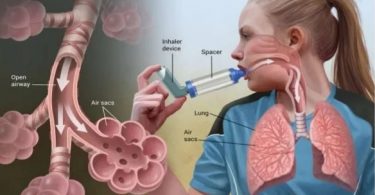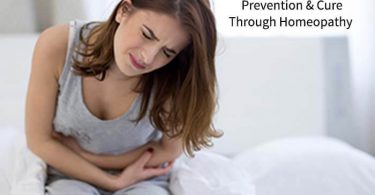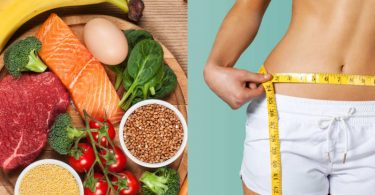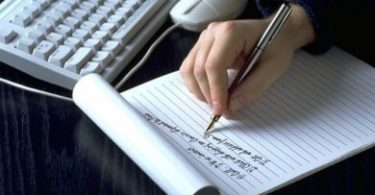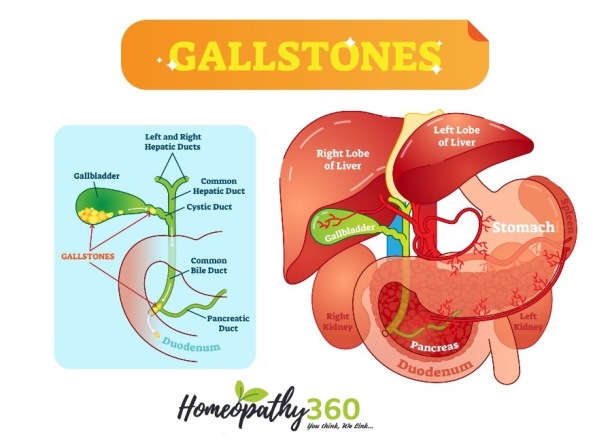
Abstract:
Gallstone disease is the most common disorder affecting the biliary system, the body’s system of transporting bile. It is otherwise known as cholelithiasis. Gallstones are solid, pebble-like masses that form in the gallbladder or the biliary tract. Mostly it affects in the age of 21 years and decreases in its 5th and 6th decades. Homoeopathic treatment is effective in cholelithiasis and also it prevents from further complication.
Keywords:
Cholelithiasis, gall stone type, homoeopathic management.
Introduction:
cholelithiasis, which is a Greek term “ chol” means bile, “lith” means stone “iasis” means process. Gallstones are formed from constituents of the bile along with other organic components. It contain cholesterol, bile pigment and calcium salts in varying proportions.
Epidemiology:
In developed countries, gallstones occur in 7% of males and 15% of females aged 18–65 years, with an overall prevalence of 11%. In individuals under 40 years there is a 3:1 female preponderance, whereas in the elderly the sex
Ratio is about equal. Gallstones are less frequent in India, the far east and Africa.
Risk factors:
Gall stones are common in 4f’s acronyms:
Fat, female, fertile (multipara),forty.
- Genetic factors- first-degree relatives of Patients . Mutation in cyp7a1 gene.
- Age-above the age of 40 years women.
- Drugs: oestrogen therapy or birth control pills due to more production of lithogenic bile as a result of Cholestatic effect of oestrogen.
- Git- crohn’s disease, ileal resection, ileal bypass surgery etc.
Aetiology:
Gallstones are usually form from sluggishly emptying of bile from the gallbladder. When bile is not fully drained from the gallbladder, it can precipitate as sludge, it can develop into gallstones. Biliary obstruction from various causes such as strictures in the bile duct or neoplasms may also lead to gallstones. The most common cause of cholelithiasis is the precipitation of cholesterol from cholesterol-rich bile.
Types of Gall stones:
1. Pure gallstones:
It occurs frequently at 10%. It has three composion.
Cholesterol – It has a changes of cholesterolosis in gallbladder and it has a appearance of Solitary, oval, Large, smooth, yellow-white.
Bile pigment- It has no changes in gallbladder and it looks like a Multiple, small, jet- black, mulberry shape.
Calcium carbonate- It also has no changes in gallbladder and it looks like a Multiple, small, Grey-white, hard.
2. Mixed gallstones:
It occurs frequently at 80%. It has a composition of Cholesterol, bile pigment and calicium carbonate in varying combination. The changes which occur in gallbladder is Chronic cholecystitis. It has appreance of Multiple, multifaceted, variable size.
3. Combined gallstones:
It occurs frequently at 10%. It has a composition of Pure gallstone nucleus with mixed gallstone shell. The changes occurs in gallbladder is Chronic cholecystitis. It has an appearance of Solitary, large, smooth.
Pathogenisis:
pathogenesis of cholesterol, mixed stones, biliary sludge:
- Biliary supersaturation
is the principal pathophysiological defect and is hepatic in origin. There will be increased concentration of cholesterol
or whenever there is decreased synthesis of bile salts there is increased
cholesterol which exceeds the solubilizing capacity of bile and this condition
is referred to as CHOLESTEROL SUPERSATURATION.
This is the most important mechanism in the formation of LITHOGENIC BILE. lithogenic means- “stone forming” - when there is
cholesterol supersaturation-
The Uni lamellar vesicles gets converted to multilamellar vesicles where there are multiple layers of phospholipid bilayers which results in NUCLEATION, an another important step in the formation of gall stones. - we should understand that with supersaturation cholesterol can no longer remain soluble and they ‘NUCLEATE” to form cholesterol monohydrate crystals. This is a crucial step in the formation of gallstone.
- At this point the content of the gall baldder is referred to ase as BILIARY SLUDGE as bile now is large is a suspension of precipitates of cholesterol monohydrate.
- The mucin secreted by the gallbladder mucosa itself acts as a
pro nucleating factor apart from the calcium.
The various anti nucleating factors are
apolipoprotein and lecithin. These are the ones which inhibits the conversion
of cholesterol into cholesterol monohydrate crystals.
- These monohydrate crystals further crystallize resulting in the formation of “microstones” and this stage is referred to as MICROLITHIASIS. over a period of time the microlithiasis grow in size by addition of more and more core and other contents of bile resulting in the formation of a macroscopic solid structure which is now referred to as GALLSTONE.
Pathogenesis of pigment stone:
Two types of pigmented stones one is the black and the other is the brown stone.
Black stones:
- They are formed in sterile bile .Black stones are increased production of unconjugated bilirubin .
- It is composed of a pigment polymer usually unconjugated bilirubin, calcium phosphate and calcium carbonate.
Brown stones:
- It is of bacterial hydrolysis of conjugated to unconjugated bilirubin.
- It consists of calcium bilirubin, calcium soaps of fatty acids and cholesterol. Stasis plays a major role as it results in precipitation of the contents of the bile. Mucin also helps in precipitation of these components resulting in the formation of pigment stones.
Sign and symptoms:
- Pain in right upper abdomen or epigastric, below right shoulder, between the shoulder blade.
- Severe lasting for 30 -90 minuts.
- Gallstones often coexist with other gastrointestinal conditions – chronic abdominal pain, heartburn, postprandial distress, bloating, flatulence, constipation, or diarrhea
- Discomfort or cramping in the abdomen.
Examination:
- Murphy’s sign and boas’ sign are positive.
- Gallbladder pain may occasionally radiate to chest and this may be mistake for angina pain.
- Acute gallstone pancreatitis is characterized by epigastric tenderness. In severe cases, retroperitoneal haemorrhage may produce ecchymosis of the flanks and peri umbilical ecchymosis -Cullen sign and Grey-Turner sign
- Tenderness and muscle guarding in right upper quadrant.
Diagnosis:
- Leucocyte count- raised with increased polymorphs.
- Plain radiograph taken in anteroposterior and right lateral position may reveal radiopaque calculi
- Ultrasonography (USG) it is most useful non-invasive method to detect gallbladder calculi.
- Oral cholecystography- identifies radiolucent stones.
- CT scan- is more sensitive in identifying gallstone calcification than plain radiology.
- ERCP-used in complicated gallstone disease include common bile duct stone.
Complications:
GALLBLADDER:
- Acute cholecystitis
- Chronic cholecystitis
- Empyema of gallbladder
- Mucocele gallbladder
- Perforation-leading to biliary
- Peritonitis
- Gangrene of the gallbladder
- carcinoma
BILE DUCT:
- Obstructive jaundice cholangitis
- acute pancreatitis
INTESTINE:
Acute intestinal obstruction
HOMOEOPATHIC MANAGEMENT:
THERAPEUTICS
CHELIDONIUM:
Pain in the inner angle of right shoulder blade, running into chest. Gallstones with pain under the right shoulder blade. Yellow tongue with taking imprints of teeth, large and flabby. Prefers hot drinks and food. Gastralgia, eating relives temporarily, esp when accompanied with hepatic symptoms. vomiting; clay-coloured stools., hard, round balls like sheeps dung. Cutting pains and stitches: constriction like a cord. Worse at inspiration, better by after eating, hot drinks.
CHINA OFFICINALIS:
Ill effects of dehydration, loss of vital fluids, blood loss, food poisoning, ill effects of eating fish, fruits, bad meat, impure water, milk, tea, sour wine or alcohol, suppressed coryza. Shooting in region of liver, tenderness and pain on touching the part but relives hard pressure. Obstruction in gallbladder with colic; Abdomen feels full and tight as if stuffed; eructation gives no relief. Periodicity: pains come on regularly at a given time each day; or every night at 12 o’ clock. Internal chills violent with icy cold of hand and feet and congestion of blood to head. periodically worse: 1am to 10 am, 12pm or 1pm, 8am to 2 or 3pm. Autumn or summer, better by bending double.
NUX-VOMICA:
Colic with pressure upwards towards the thorax. Pressure an hour or two after eating as from a stone. Cannot use the mind for two or three hours after a meal and pain in stomach. Even the least ailments affects her greatly. Ineffectual urging to stool, irregular peristalsis. Chilly, if he uncovers or moves. Constipation; with frequent unsuccessful desire, passing small quantities of feces; sensation as if not finished. Time modalities: at 3 am, at 10 am or 11 am. Better by evening, while at rest, in a warm room, on covering, from hot drinks.
BERBERIS VULGARIS:
Ailments from Carriage riding, any sudden jerking movement. Bubbing Pain in the region of kidneys< stooping and raising again,sitting or lying. > by standing. Gallstones attack with severe pain. Violent stabbing in region of liver, taking breath, must bend over. Gallbladder or kidney colic arresting the breathing. Bubbling feeling as if water coming up through the skin. Sudden stabbing like a knife pucturing the liver. Urine; Greenish, blood red, with thick slimy mucus, transparent, reddish or jelly like sediment.
DIOSCOREA VILLOSA:
Ailments from tea drinkers, after eating, old cheese, uncooked fruit, pastry. Gallbladder colic, pain extending to the chest, back and the arms.< bending forward> by bending backwards. Pains are remittent and paroxysmal. Flatulence after meals or after eating, esp of tea drinkers are of subject to violent colic. Pains are unbearable, sharp, cutting, twisting, griping, grinding that radiating to distant part. Hard, dull pain, gall-bladder, at 7 p.m. Violent twisting colic, occuring in regular paroxysms, as if intestines were grasped and twisted by a poweful hand.
CARDUUS MARIANUS:
Ailments from salted food, after eating, beer. Terrible attacks of gallstone colic. Nausea, retching of vomiting of green acid fluid or blood. Chill and fever at night with jaundice <uncovering. Swelling of gallbladder with painful tenderness. Jaundice with dull headache, bitter taste in mouth and white tongue. Worse on lying on left side, motion, touch, eating, beer, better by bleeding.
CHIONANTHUS:
Sensation of double action in stomach, while vomiting, one tying to force something up, the other sucked it back. Colic and cold sweat on forehead. Stools are clay colored stool, tarry also soft, yellow and pasty. Aching in umblical region, griping. Feels as a string were tied in ‘slip knot’ around the intestine which was suddenly drawn tight and then gradually loosened. Stool copious, watery, dark brown, undigested and showing an absence of bile. Stools terribly offensive like carrion. Worse on motion, cold damp weather, better by lying on abdomen, warm weather.
LEPTANDRA:
Ailments from fats, rich foods, meat, vegetables, cold drinks, exposure to wet weather, motion. Burnings, liver: near gall bladder. Dull aching, liver < near gall bladder. Yellow coated tongue. Jaundice. Better lying onstomach or side. Worse oncold drinks, exposure to wet weather, motion, periodically.
LYCOPODIUM:
Ailments from ill effects of fear., fright., abuse, anger, anxiety, embarassment, sugar, sweet, tobacco chewing, wine, fever, over lifting, masturbation, riding in carriage. Bitter taste in the mouth at night. Fermentation in the abdomen with loud grumbling, croaking, esp in the lower abdomen. Sour vomiting during chill or fever. Tongue oscillating from side to side like a pendulum.Goes to meals with vigorus appetite, but a few mouth fills him up full. Burning as from hot coals between the scapula. Worse in afternoon, At night, from 4-8 pm, from cold, in a warm room, after eating, wrapping up the head, while urinating. Better by motion, in heat of bed, in cool open air, warm food and drinks, loose garments, uncovering the head and from eructation.
VERATRUM ALBUM:
Ailments from post operative shock, shock of injuries, bad effects from fright, disappointed love, injured pride or honour. suppressed rashes, opium, tobacco, alcohol. Terrible colic with nausea and vomiting. flatulent colic. Large stools with much straining until copious and forcibly evacuated followed by great prostration. Diarrhea from drinking cold water in hot days. Copious vomiting with nausea,< by drinking and least motion. Thirst for cold water but is vomited as soon as swallowed.
BELLADONNA:
Ailments fromhaircut, head getting wet, sausages, sunstroke, walking in wind or draft of air. Cramps and colic as if a hand has clutched some parts. Bearing down in abdomen as if all viscera would protrude through genitals. Colic pain from gallstones, cutting pain in epigastrium> by bending backward. Colic pain comes quickly and goes quickly. Great thirst for cold water. Jaundice with stones in gallbladder. Glands are swollen and tender, red. Pains are throbbing, sharp, cutting and shooting in nature. Flatulent colic, distended and hot abdomen. Extreme sensitiveness to touch and bed clothes. Strawberry tongue, dry ,red, hot and cracked.
FEL TAURI:
Liquifies bile and acts as a purgatives and cholegogue. Obstruction of the gallducts. Biliary calculi. Eructations, gurgling in the stomach and epigastric region. Violent peristaltic movements. Tendency to sleep after eating.
CHOLESTERINUM:
Obstinate hepatic engorgements and jaundice. Gallstones and insomnia. cholesterine is the physiological opponent of lecithin. Cancer of the liver. Burning pain on the sides while walking holds his hand on the side, as it hurts him.
REFRENCES:
1. Davidson, S. and Macleod, J., 1986. Davidson’s principles and practice of medicine. Edinburgh: English Language Book Society.
2. Golwalla, A. and Golwalla, S., n.d. Medicine for students: A Reference book for the family physician.
3. Das, S., 2010. A concise textbook of surgery. 6th ed. kolkata: S. Das..
4. Boericke, W. and Boericke, O., 2004. Pocket manual of homœpathic materia medica. New Delhi: Indian Books & Periodicals Publishers.
5. Allen, H., 1999. Allen’s keynotes Rearranged and classified with leading remedies of the Materia Medica and Bowel Nosodes. 10th ed. New Delhi: B. Jain Publishers (p) Ltd.
6. Murphy, R., 2002. Lotus materia medica. New Delhi: B. Jain Publishers.
About the Author:
Dr. Abinaya MD (Hom) Father Muller Homoeopathic Medical College and Hospital


